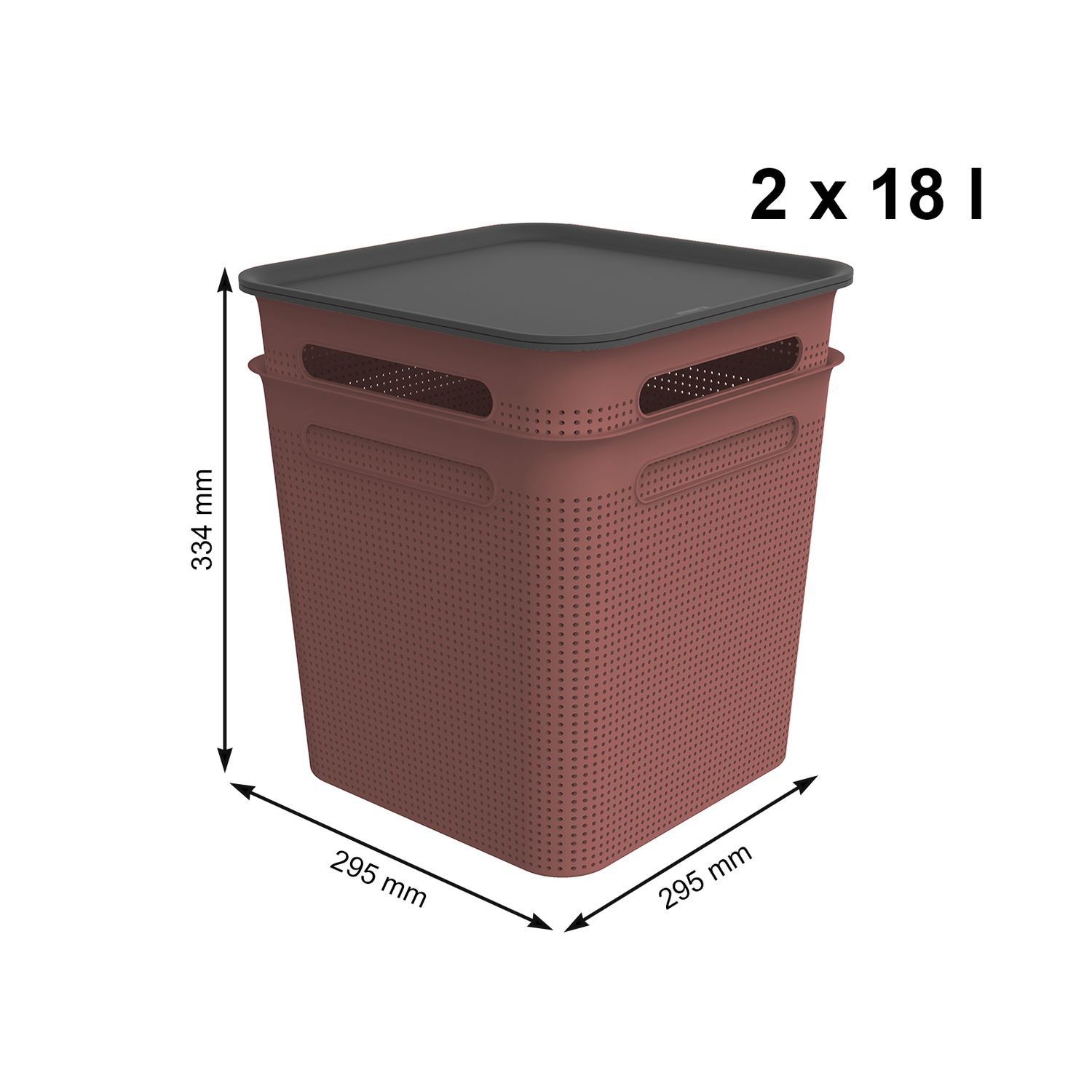Decanting groceries: Which storage containers do I need and what fits in where?
Anyone who spends time on Pinterest or Instagram will be familiar with them: the perfectly organized pantries filled with shelves of matching containers. With beautifully organized groceries and consistent labeling—without a box or plastic bag to be seen. We all love these pictures. But the visual is only one aspect.
Why should you decant food?
Why not just put the boxes of cereal, pasta and baking soda right on the pantry shelf? The first thing to do with decanting food is to get rid of the obvious clutter. If you look in your cupboard, you will find that there is hardly a pack or can that has the same format. Proper stacking is hardly possible. And there is packaging (e.g. cornflakes) that has another bag inside the cardboard packaging. This is a complete waste of space!
The overview
Let's stay with the example of cornflakes packaging: Who hasn't it happened to you that you come back from shopping and the next morning there is only a tiny bit of cornflakes left in the packaging? If you transfer them to transparent packaging, you always know how much is left.
Longer shelf life and fewer bugs
Filling food in airtight containers extends its shelf life. And you fend off unwanted visitors, such as mealworms or moths, which can easily bite through paper bags. You can already see when the pack comes out of the store with vermin infestation (which doesn't happen that seldom) and you can exchange it directly.
Easier to use
Decanting into containers not only helps to keep track of the quantity, but also makes it easier to use the food. Scooping the flour out of a container is much easier than out of a torn bag that you can't reseal properly.
The best container
There are three criteria that storage boxes should meet: they must be transparent, they must close tightly and they must make the most of the space in the closet.
Number 1: Why transparent?
In a transparent box you can immediately see the contents and the fill level of the food. Simply cut out the best before date (MHD) from the pack and stick it on the container with adhesive tape. If you need to be quick and don't want to label extra stickers, then this can also help: Cut out the packaging lid or bag labeling of the food and simply place it on top. The transparent cover makes it easy to read everything. If you label your cans on the side, for example because the boxes are on a shelf, you simply slide the label down the inside of the container wall. The food then automatically keeps it in place.
Number 2: Close tightly
Keyword food moths: Of course, the tighter the lid, the higher the protection against pests. Moisture does not penetrate and everything stays optimally dry and fresh.
Number 3: Make the most of the closet.
Large glasses often look very pretty, but do not use the space optimally due to their round shape. Swapping glasses for square boxes saves around 20% of space. In addition, square cans are easier to stack and combine with each other.
The big question: Which storage jars do I need and what fits in where?
In fact, this topic is really exciting. Because when we buy groceries, they are usually given in grams and the sizes of storage jars in litres. How does that fit together? Do I have to convert my kilograms of flour into liters now? Is it like water – 1 kilo equals one liter? Unfortunately, it's not quite that simple. Unfortunately, a kilo of flour does not correspond to a liter of volume. And 1 kg of coffee beans takes up a completely different amount of space. Put the packaging of one liter of milk, one pack of flour (1kg) and one kilo of coffee beans next to each other. This is the best way to see the differences. What is needed to calculate the space requirement of a food is the bulk density.
Here is a table so that you don't have to use a calculator or choose the wrong container every time.
The storage jars size chart
Better buy a little bigger
The following consideration is important: What do I want to decant and how much of it? Anyone who only bakes once a year and stores a packet of flour needs a smaller container than someone who bakes cakes twice a week. Then the can should be twice as big to be able to store more.
And another tip: I'll stick with the example of coffee. 500g of ground coffee has a volume of 0.9 liters. So one pack would fit perfectly in a liter jar. But how does it look in real life? Ideally, the coffee is then bought when the can is not completely empty. So there is still some leftover and the new pack is refilled. In most cases, the new coffee then fits exactly into the can. Not. No, let's be honest: It never works and so there is always a residue in the coffee bag, which then flies around in the cupboard for days.
So for food that just barely fits in a storage jar, you should choose the next larger size. In this case it would be the 1.5 liter can.
I'm unsure about the size
Flour is a good example of a product that almost all manufacturers sell in 1kg sizes in a paper bag. But it all ends with semolina: you can find everything from kilo packs to 300 g cans. If the food is sold in kilos, pounds and half pounds (1000g, 500g, 250g) then the food can be quickly calculated down the table and the appropriate container found. But there are products that don't fit into any scheme. Neither of a comparable size, nor the packaging unit.
Then the only solution is to try it out: Simply place the packaging in the chosen container. If the lid can be closed easily, then it is easily sufficient.
Comparing similar foods also helps: Cocoa powder has a similar density to flour, ginger and nutmeg are similar, and lentils and rice, each weighing one kilo, fit into a 1.5 liter container.
Plan smart
If you want to decant your food, you not only have to take a close look at which things you would like to keep in a can and how many of them you have, but also how much space you need. The first question is: Where are the vessels? In a drawer? In a closet? On a shelf? How high can the cans be stacked?
Regardless of whether it is a drawer or a cupboard, the first thing to do is to look at the floor space and measure it accurately. Once you have calculated these (length x width), you can calculate how many cans can be placed next to each other there. This is relatively easy because all LOFT boxes have a base of 10 cm (10×10 cm, 10×20 cm, 10×15 cm). You can draw in the cans on a piece of squared paper and calculate your needs. But beware: Don't plan too tightly! Because the cans have a very slightly overhanging edge at the top and you still have to be able to grab it to lift it out.
And then you can plan upwards. Depending on the depth of the drawer or the height of the shelf/cabinet and the need for different sizes, you can now see which cans you need. Since the LOFT cans can be stacked wonderfully due to their size, you can also work with different sizes here. In the case of drawers, the cans should then be labeled from above, in the case of cupboards and shelves from the side.
And another tip:
Always leave a small amount of space in the drawer or on the shelf to accommodate small leftovers (e.g. what no longer fit in the tin) or to store seasonal foods (e.g. in the Christmas bakery) that do not have their own container.





















